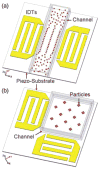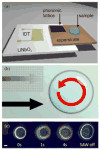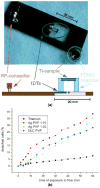Surface acoustic wave devices for chemical sensing and microfluidics: A review and perspective
- PMID: 29151901
- PMCID: PMC5685524
- DOI: 10.1039/C7AY00690J
Surface acoustic wave devices for chemical sensing and microfluidics: A review and perspective
Abstract
Surface acoustic waves (SAWs), are electro-mechanical waves that form on the surface of piezoelectric crystals. Because they are easy to construct and operate, SAW devices have proven to be versatile and powerful platforms for either direct chemical sensing or for upstream microfluidic processing and sample preparation. This review summarizes recent advances in the development of SAW devices for chemical sensing and analysis. The use of SAW techniques for chemical detection in both gaseous and liquid media is discussed, as well as recent fabrication advances that are pointing the way for the next generation of SAW sensors. Similarly, applications and progress in using SAW devices as microfluidic platforms are covered, ranging from atomization and mixing to new approaches to lysing and cell adhesion studies. Finally, potential new directions and perspectives on the field as it moves forward are offered, with a specific focus on potential strategies for making SAW technologies for bioanalytical applications.
Figures

















References
-
- White R, Voltmer F. Applied physics letters. 1965;7:314–316.
-
- Morgan D. Surface acoustic wave filters: With applications to electronic communications and signal processing. Academic Press; 2010.
-
- Morgan DP. International journal of high speed electronics and systems. 2000;10:553–602.
-
- Länge K, Rapp BE, Rapp M. Analytical and bioanalytical chemistry. 2008;391:1509–1519. - PubMed
Grants and funding
LinkOut - more resources
Full Text Sources
Other Literature Sources

